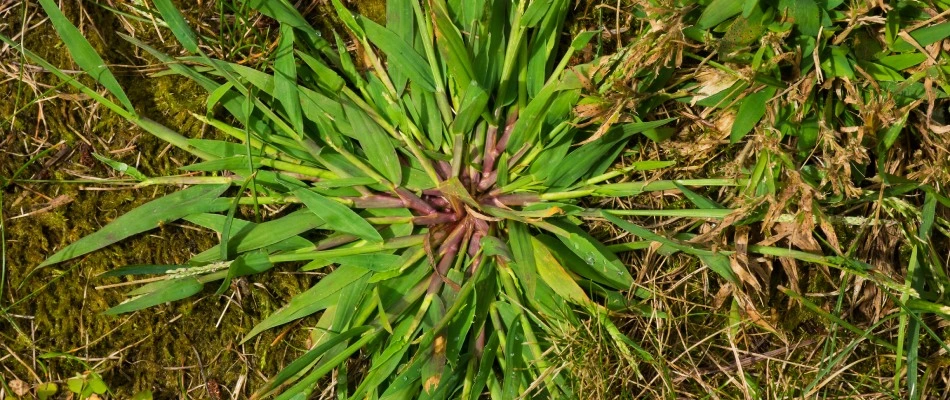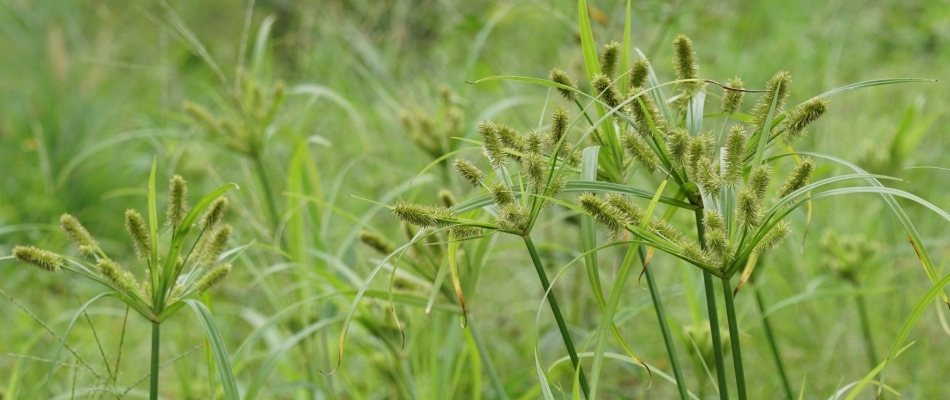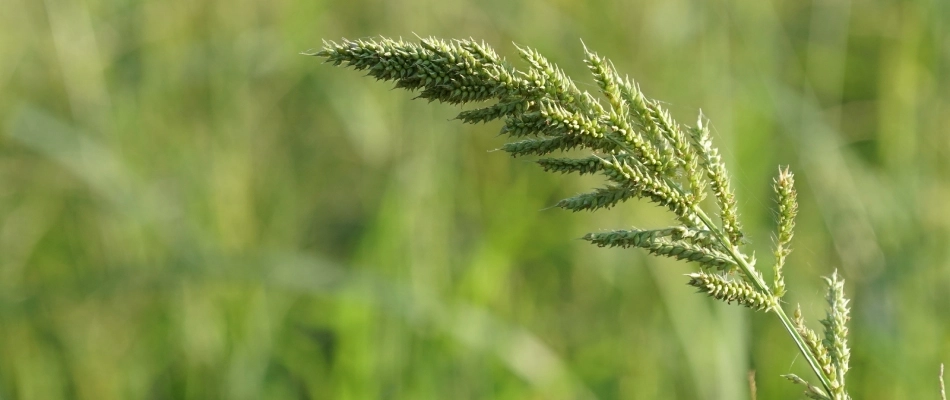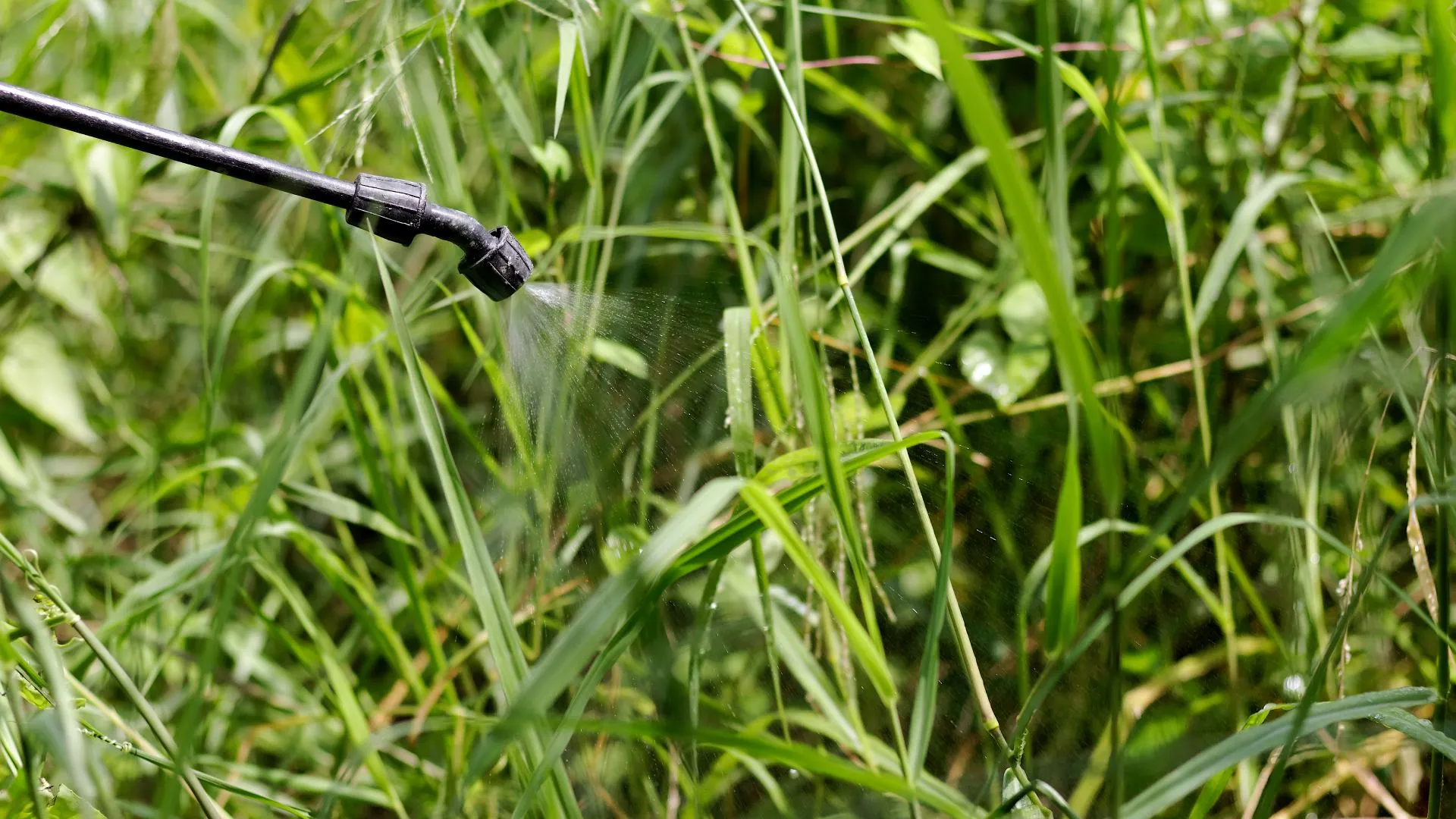Weeds are a constant concern for any property owner, but once you're familiar with weeds in your area, you can spot them much earlier and get rid of them before they take over! For our area in West Chester, Pennsylvania, four of the most common weeds are crabgrass, black medic, foxtail, and barnyardgrass. While these weeds all have unique characteristics, they can all cause major problems in your lawn and landscape. Weeds will steal nutrients from your plants and crowd them out of their own space, stunting growth and taking control of the area around them.
1. Crabgrass

Named after the stems that radiate out of the center of the plant and resemble crab legs, crabgrass is a formidable foe to face in your lawn. It grows low to the ground and typically, its seeds will begin to sprout when the soil temperature is around 55 degrees Fahrenheit. However, crabgrass can tolerate and even thrive in much hotter and dry conditions, which is what makes it such a danger to the lawn. Without the proper care, your lawn could be in a state of vulnerability in summer whilst crabgrass is thriving and stealing any extra nutrients it finds. These plants produce thousands of seeds that can germinate the following spring, so it's essential to catch this weed early and eradicate it.
2. Black Medic

You may think you have clovers in your lawn, but at a second glance, it's black medic weed instead. These weeds have rounded, trifoliate leaves and similar coloration to clovers, but they produce small, bright yellow flowers. These plants produce seed pods that turn black when they're ripe, with each pod containing one gold or brown seed that can persist in the soil for years. Because of this longevity, if you don't want black medic weeds in your lawn or landscape, it's essential to catch them early before they've begun flowering and seeding!
While black medic flowers look like a single unit, they're actually a cluster made up of 10-50 tiny flowers!
3. Foxtail

With three different varieties – yellow, green, and giant – foxtail is a tricky weed to identify and can be easily mistaken for crabgrass. Foxtail has wide, flat leaf blades, but it will develop seed heads in summer that distinguish it from crabgrass. Yellow foxtail is the smallest of the three varieties and is the most common in lawns, very tolerable of different growing conditions, and can thrive in dry or moist soil. Flower stems will emerge from the base of the leaves and spike out. This weed gets its name because its overall shape resembles a fox's tail.
4. Barnyardgrass

Barnyardgrass thrives in moist, well-fertilized soil – exactly the type of soil found in a healthy lawn! Its leaves are flat and smooth, ranging from 4-12 inches long, and feature a distinct white vein in the middle. When barnyardgrass flowers, it'll sprout a purple-tinged stem that makes it increasingly easy to identify, but you will want to catch it before this point if you can. Once it flowers, it'll produce a ton of seeds and start spreading like crazy!
Show these weeds the door. Call today to enroll in our weed control program!
As a veteran-owned company, Countywide Landscape was built off the principles of hard work, integrity, and high-quality results. Our team consists of the best and brightest in our area with a passion for everything lawn and landscape and a drive to outperform themselves. We serve West Chester, PA and nearby cities like Downingtown and Exton with top-tier lawn and landscape solutions, including weed control! With our weed control program, not only will your lawn be protected from weeds like crabgrass and foxtail, but we'll also fertilize your lawn so it can truly thrive. Call us today at (610) 285-9727 to enroll in our weed control program!




Comments (0)
Thanks for your comment!
Thanks for your feedback! Your comments have been successfully submitted! Please note, all comments require admin approval prior to display.
Error submitting comment!
There is a problem with your comment, please see below and try again.